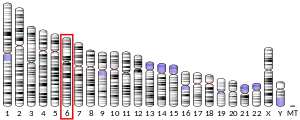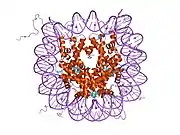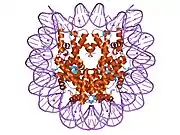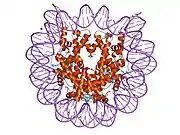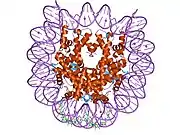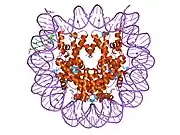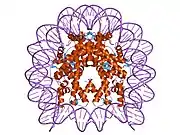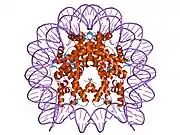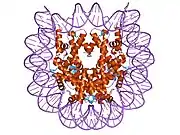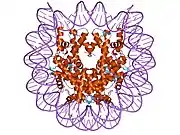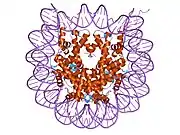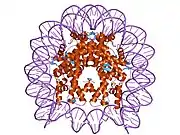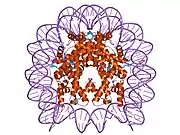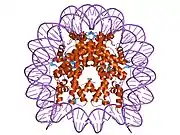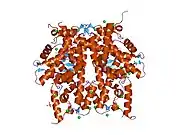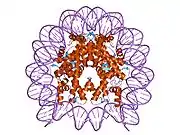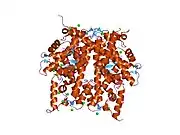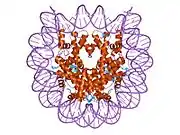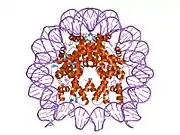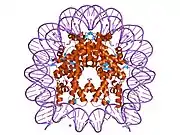| H2BC8 | |||||||||||||||||||||||||||||||||||||||||||||||||||
|---|---|---|---|---|---|---|---|---|---|---|---|---|---|---|---|---|---|---|---|---|---|---|---|---|---|---|---|---|---|---|---|---|---|---|---|---|---|---|---|---|---|---|---|---|---|---|---|---|---|---|---|
 | |||||||||||||||||||||||||||||||||||||||||||||||||||
| |||||||||||||||||||||||||||||||||||||||||||||||||||
| Identifiers | |||||||||||||||||||||||||||||||||||||||||||||||||||
| Aliases | H2BC8, H2B.1A, H2B/a, H2BFA, dJ221C16.8, histone cluster 1, H2bg, histone cluster 1 H2B family member g, HIST1H2BG, H2B clustered histone 8, H2BC10, H2BC7, H2BC6, H2BC4 | ||||||||||||||||||||||||||||||||||||||||||||||||||
| External IDs | OMIM: 602798 MGI: 2448383 HomoloGene: 136770 GeneCards: H2BC8 | ||||||||||||||||||||||||||||||||||||||||||||||||||
| |||||||||||||||||||||||||||||||||||||||||||||||||||
| |||||||||||||||||||||||||||||||||||||||||||||||||||
| |||||||||||||||||||||||||||||||||||||||||||||||||||
| |||||||||||||||||||||||||||||||||||||||||||||||||||
| |||||||||||||||||||||||||||||||||||||||||||||||||||
| Wikidata | |||||||||||||||||||||||||||||||||||||||||||||||||||
| |||||||||||||||||||||||||||||||||||||||||||||||||||
Histone H2B type 1-C/E/F/G/I is a protein that in humans is encoded by the HIST1H2BG gene.[5][6][7]
Histones are basic nuclear proteins that are responsible for the nucleosome structure of the chromosomal fiber in eukaryotes. Nucleosomes consist of approximately 146 bp of DNA wrapped around a histone octamer composed of pairs of each of the four core histones (H2A, H2B, H3, and H4). The chromatin fiber is further compacted through the interaction of a linker histone, H1, with the DNA between the nucleosomes to form higher order chromatin structures. This gene is intronless and encodes a member of the histone H2B family. Transcripts from this gene lack polyA tails; instead, they contain a palindromic termination element. This gene is found in the large histone gene cluster on chromosome 6p22-p21.3.[7]
References
- 1 2 3 GRCh38: Ensembl release 89: ENSG00000273802 - Ensembl, May 2017
- 1 2 3 GRCm38: Ensembl release 89: ENSMUSG00000069268 - Ensembl, May 2017
- ↑ "Human PubMed Reference:". National Center for Biotechnology Information, U.S. National Library of Medicine.
- ↑ "Mouse PubMed Reference:". National Center for Biotechnology Information, U.S. National Library of Medicine.
- ↑ Albig W, Kardalinou E, Drabent B, Zimmer A, Doenecke D (Nov 1991). "Isolation and characterization of two human H1 histone genes within clusters of core histone genes". Genomics. 10 (4): 940–8. doi:10.1016/0888-7543(91)90183-F. PMID 1916825.
- ↑ Marzluff WF, Gongidi P, Woods KR, Jin J, Maltais LJ (Oct 2002). "The human and mouse replication-dependent histone genes". Genomics. 80 (5): 487–98. doi:10.1016/S0888-7543(02)96850-3. PMID 12408966.
- 1 2 "Entrez Gene: HIST1H2BG histone cluster 1, H2bg".
Further reading
- Ohe Y, Hayashi H, Iwai K (1979). "Human spleen histone H2B. Isolation and amino acid sequence". J. Biochem. 85 (2): 615–24. doi:10.1093/oxfordjournals.jbchem.a132371. PMID 422550.
- Frohm M, Gunne H, Bergman AC, et al. (1996). "Biochemical and antibacterial analysis of human wound and blister fluid". Eur. J. Biochem. 237 (1): 86–92. doi:10.1111/j.1432-1033.1996.0086n.x. PMID 8620898.
- Díaz-Jullien C, Pérez-Estévez A, Covelo G, Freire M (1996). "Prothymosin alpha binds histones in vitro and shows activity in nucleosome assembly assay". Biochim. Biophys. Acta. 1296 (2): 219–27. doi:10.1016/0167-4838(96)00072-6. PMID 8814229.
- Albig W, Kioschis P, Poustka A, et al. (1997). "Human histone gene organization: nonregular arrangement within a large cluster". Genomics. 40 (2): 314–22. doi:10.1006/geno.1996.4592. PMID 9119399.
- Albig W, Doenecke D (1998). "The human histone gene cluster at the D6S105 locus". Hum. Genet. 101 (3): 284–94. doi:10.1007/s004390050630. PMID 9439656. S2CID 38539096.
- El Kharroubi A, Piras G, Zensen R, Martin MA (1998). "Transcriptional activation of the integrated chromatin-associated human immunodeficiency virus type 1 promoter". Mol. Cell. Biol. 18 (5): 2535–44. doi:10.1128/mcb.18.5.2535. PMC 110633. PMID 9566873.
- Piredda L, Farrace MG, Lo Bello M, et al. (1999). "Identification of 'tissue' transglutaminase binding proteins in neural cells committed to apoptosis". FASEB J. 13 (2): 355–64. doi:10.1096/fasebj.13.2.355. PMID 9973324. S2CID 16417170.
- Deng L, de la Fuente C, Fu P, et al. (2001). "Acetylation of HIV-1 Tat by CBP/P300 increases transcription of integrated HIV-1 genome and enhances binding to core histones". Virology. 277 (2): 278–95. doi:10.1006/viro.2000.0593. PMID 11080476.
- Deng L, Wang D, de la Fuente C, et al. (2001). "Enhancement of the p300 HAT activity by HIV-1 Tat on chromatin DNA". Virology. 289 (2): 312–26. doi:10.1006/viro.2001.1129. PMID 11689053.
- Andersen JS, Lyon CE, Fox AH, et al. (2002). "Directed proteomic analysis of the human nucleolus". Curr. Biol. 12 (1): 1–11. doi:10.1016/S0960-9822(01)00650-9. PMID 11790298. S2CID 14132033.
- Kim HS, Cho JH, Park HW, et al. (2002). "Endotoxin-neutralizing antimicrobial proteins of the human placenta". J. Immunol. 168 (5): 2356–64. doi:10.4049/jimmunol.168.5.2356. PMID 11859126.
- Strausberg RL, Feingold EA, Grouse LH, et al. (2003). "Generation and initial analysis of more than 15,000 full-length human and mouse cDNA sequences". Proc. Natl. Acad. Sci. U.S.A. 99 (26): 16899–903. Bibcode:2002PNAS...9916899M. doi:10.1073/pnas.242603899. PMC 139241. PMID 12477932.
- Cheung WL, Ajiro K, Samejima K, et al. (2003). "Apoptotic phosphorylation of histone H2B is mediated by mammalian sterile twenty kinase". Cell. 113 (4): 507–17. doi:10.1016/S0092-8674(03)00355-6. PMID 12757711. S2CID 21854.
- Tollin M, Bergman P, Svenberg T, et al. (2004). "Antimicrobial peptides in the first line defence of human colon mucosa". Peptides. 24 (4): 523–30. doi:10.1016/S0196-9781(03)00114-1. PMID 12860195. S2CID 7435936.
- Mungall AJ, Palmer SA, Sims SK, et al. (2003). "The DNA sequence and analysis of human chromosome 6". Nature. 425 (6960): 805–11. Bibcode:2003Natur.425..805M. doi:10.1038/nature02055. PMID 14574404.
- Coleman MA, Miller KA, Beernink PT, et al. (2004). "Identification of chromatin-related protein interactions using protein microarrays". Proteomics. 3 (11): 2101–7. doi:10.1002/pmic.200300593. PMID 14595808. S2CID 23471253.
- Lusic M, Marcello A, Cereseto A, Giacca M (2004). "Regulation of HIV-1 gene expression by histone acetylation and factor recruitment at the LTR promoter". EMBO J. 22 (24): 6550–61. doi:10.1093/emboj/cdg631. PMC 291826. PMID 14657027.
- Howell SJ, Wilk D, Yadav SP, Bevins CL (2004). "Antimicrobial polypeptides of the human colonic epithelium". Peptides. 24 (11): 1763–70. doi:10.1016/j.peptides.2003.07.028. PMID 15019208. S2CID 28953527.
